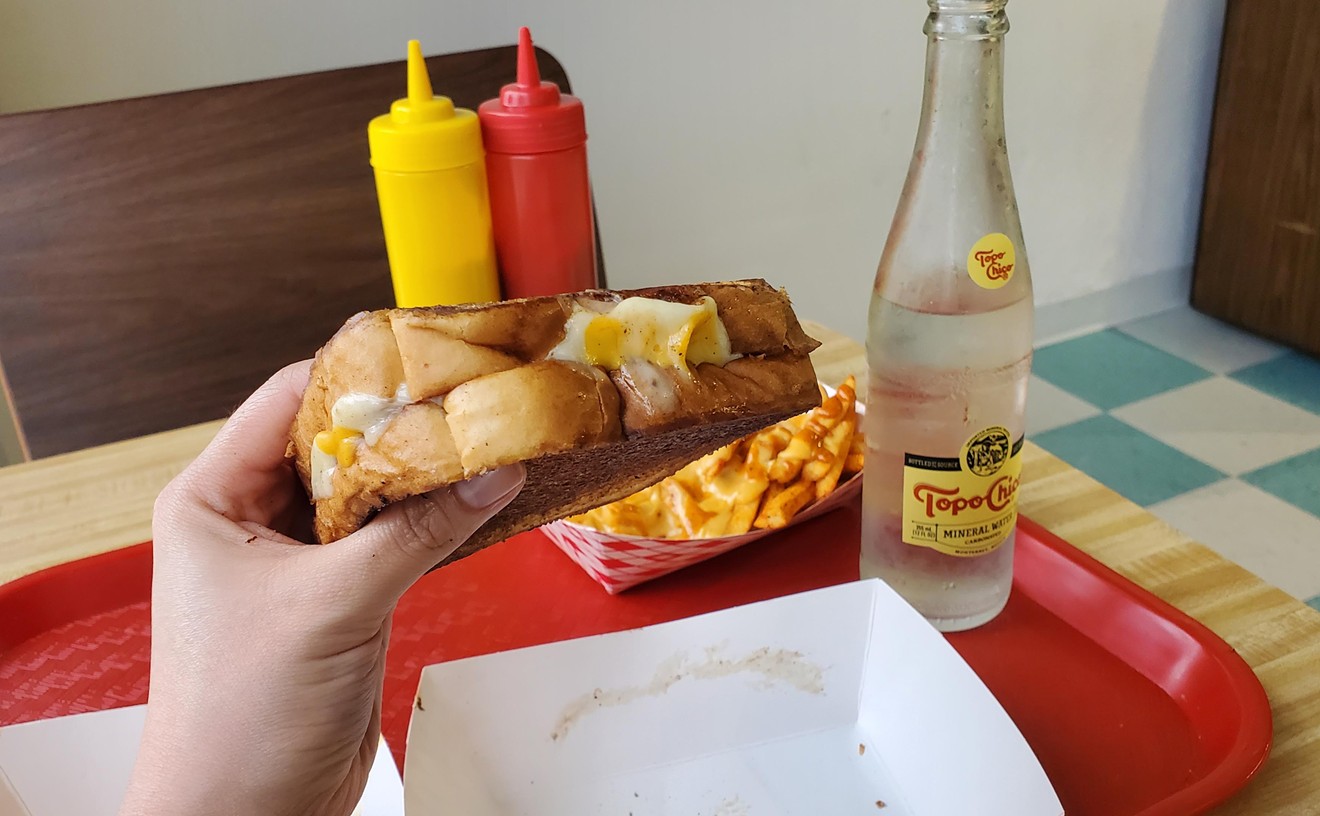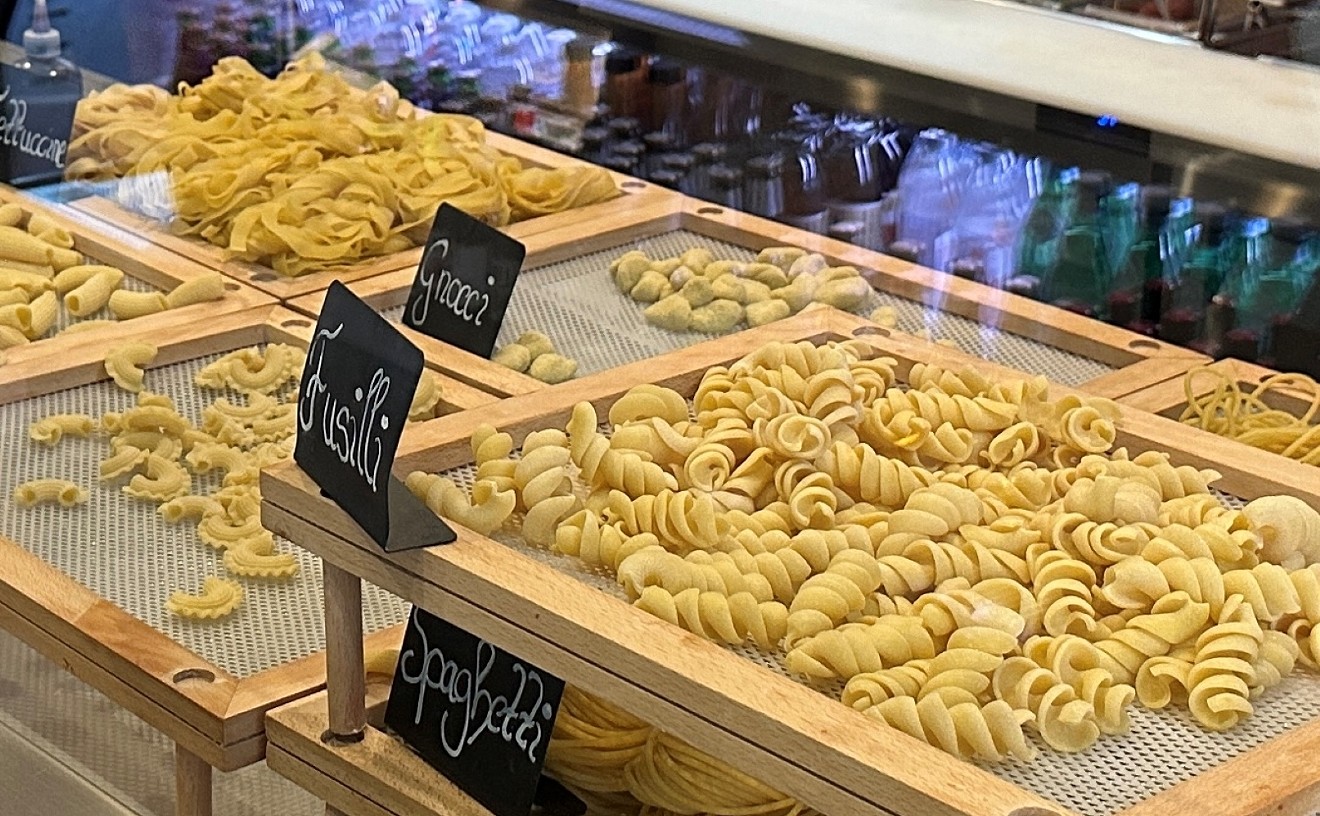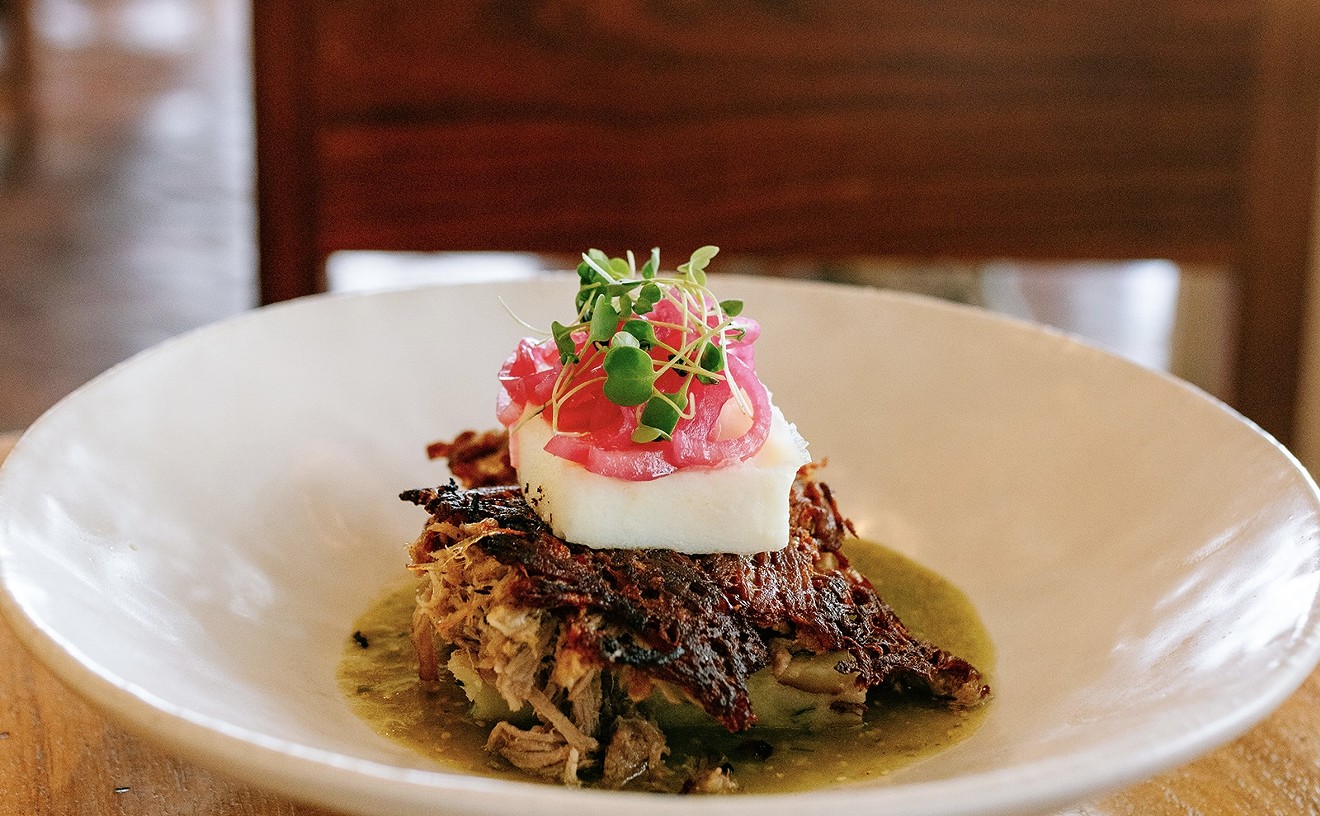Sticker-shock aside, some interesting books are on that shelf. You can find a 1961 edition of Larousse Gastronomique, that burly culinary encyclopedia, for $65. A 1934 edition of Auguste Escoffier's Ma Cuisine rings in at $45. And lest you think veganism is the invention of some angst-ridden Nirvana fan, there's the 1926 edition of The Lindlahr Vegetarian Cookbook for $45.
But my favorite of the bunch is The 20-minute Cookbook by Michael Reise, for which Guthrie wants $17--a real steal. This circa 1953 tome is entertaining and as practical as a paring knife.
Directions for "lima bean, frozen" say to "cook the beans as directed on the package" then add lemon juice, paprika, and butter, presumably so they don' t taste like the stuff used to bind the book.
A recipe for cream chipped beef, that tasty American classic known in military parlance as shit on a shingle when served over toast (SOS in polite circles), includes this bit of advice: "Remove [beef] from jar and roll into a cigar. Slice thinly and pull slices apart with fingers." I bet even Dee Lincoln isn't this clever.
Which raises the question: Why would anyone want to resurrect decades-old American grub of any kind? Roots, that's why. Guthrie, formerly of Hotel St. Germain as well as the Quadrangle Grille and Mangia, has a long family history in restaurants serving traditional American fare. His great-grandmother owned a restaurant in Cincinnati from the '20s through the '40s, and his mother operated The Ovens of Brittany, a restaurant in Madison, Wisconsin, for some 26 years.
Guthrie says he wants to capture traditional American food served in a classic urban diner setting. "Historically speaking, I'm trying to do fresh food at a reasonable price for people walking down the street like they used to in the '20s, '30s and '40s," he explains.
But an old-fashioned stroll along Dallas streets may best be left to the annals of history. On one visit to this diner plugged into a circa 1910 brick structure on South Ervay, a window from the building's second story came loose from its frame and dropped to the sidewalk, exploding into ugly shards near the restaurant's entrance.
Guthrie says the building was derelict before he renovated the ground floor into a catering kitchen and restaurant. Retail space is slated to go in next door, while the second story, apparently still derelict, will be converted into residential or office space.
The diner itself is simple, crisp, clean (with the exception of a few crickets), and pleasantly assembled. It has bright red booths with wooden benches, tables, and chairs in a room with ivory walls on which hang photos from Guthrie family restaurants. Food is ordered at the front counter, and a scruffy cook grunts your order number from a narrow slot through which he shoves out the plates when it's done. How American can you get?
The menu includes eggs and breakfast plates; sandwiches, soups, and salads; blue-plate specials; and housemade desserts. Guthrie even serves his own custom-blend coffees and hosts an all-you-can-eat fish fry on Friday nights.
He says his menu is derived from old family recipes as well as a few from his cookbook collection. That's why it's surprising that the food, for the most part, is underwhelming. Not quite as bad as that in the 20-minute cookbook, but it's treading within shouting distance of those depths. The blue-plate baked cod was dry, rubbery, and bland. A side of sweet, tender sauteed cabbage with crisp carrots would have come close to redeeming it if the fluffy mashed potatoes hadn't been dry and tasteless.
Which is a problem with this place. Everything seems under-seasoned, overcooked, or both. Spinach-ricotta ravioli was good: tender, firm pillows stuffed with a creamy, tasty core. But the tomato sauce, a tomato reduction with olive oil and garlic, was not only mouth-puckering tangy, it was scorched, giving it off singed-sour flavors. A slice of garlic bread was dry and stale.
Classic Italian salad was an attractive assembly of half-moon layers of salami slices and provolone topped with thick slices of juicy tomato, red onion, and black olive. But the provolone was tepid, and the salami, while pleasantly lean, lacked bite. A homemade balsamic mustard dressing of garlic, olive oil, balsamic, and mustard seemed texturally clumsy and too viscous.
Sandwiches were good--fresh and hearty. But the juicy cheeseburger had little rich meat flavor, and the whole-wheat bun overwhelmed it. The whole grilled chicken breast sandwich was satisfying save for dry, almost flavorless meat.
And if they had served Guthrie's housemade cherry pie at Twin Peaks' Double-R Diner, Agent Cooper would have blown town and left the who-killed-Laura-Palmer mystery to the owls. The crust was cakey, the filling was gelatinous, and it was topped with a bland crumb coating.
Although Guthrie says his primary motivation for opening his downtown diner was to have a base kitchen for his catering business, the idea behind this offshoot in his grand culinary scheme is sound: The ambiance is engaging; the menu has great urban potential; and the cookbooks make for good reading. But the food will have to be tightened before this diner can claim a piece of history.
There's something irresistibly appealing about buffets. I don't know if it's the sight of all those empty plates ready to be filled instantly, or if it's the joy of going back for another pile when the first one has been leveled.
The attraction is puzzling. One of my favorite places to eat before I knew better was Smorga Bob's, a West Coast place where all the vegetables tasted like they were stewed in urine, and all the meat looked like it was cut from a potato sack.
But it didn't matter. You could load it all onto your plate and hold it together with a choice of gravy adhesives in hues ranging from cream to driveway asphalt. Plus, you could fill your belly six times over for $7.95.
Control. This must be the buffet table's most potent attraction. You can mix and match starches, put chipped beef on your grilled salmon with dill and lumpfish roe, and drown your prime rib in Velveeta nacho glue.
And when you combine the swell flexibility of the buffet table with the exquisite addictiveness of Japanese food, you get a peculiar form of buffet insanity. There's this place in San Francisco where the sushi bar has a waterway running around it. Chefs load the stuff on these little flat-top boats that motor the circuit while diners pluck and grab like a pack of guppies munching on their newborn progeny. The sushi was mostly dreadful, but it didn't matter. It's the thoughtless possibilities for gluttony that counts.
And that's what struck me when I first walked into Tokyo One Seafood & Steak on Belt Line Road in Addison. I could instantly load up on sushi from a buffet table without waiting for the pesky choreographed maneuvers of the sushi chef.
The sushi was mostly disheveled. The raw fish was warm, sinuous, and droopy; the tobiko (flying fish roe) was mercilessly crushed into the rice pads instead of elegantly ascending in an orange, fluffy puff; and the nori (seaweed) wrapping on the sushi roll slices was tattered, frayed, and separating.
Other buffet appearances included a cucumber-and-seaweed salad, which was crispy and flavorful with soft feathery seaweed contrasting with crisp, clean cucumber; a teriyaki chicken with dry, overcooked, hard flesh; grilled large whole prawns that were pasty, mealy, and fishy; and a shrimp-and-vegetable tempura that was cold, waxy, mushy, and limp. A dipping sauce that tasted like it was made from boiled aging fish heads accompanied the tempura.
It wasn't all buffet buffoonery, though. The sea bass was flaky, buttery, and moist, while the marinated mussels were sweet and chewy. Samba grill, a small whole mackerel-type fish that was halved before serving, was moist, tender, and flavorful.
The buffet also included fresh fruit, shellfish, an assortment of desserts, and a cook-to-order stir-fry. Plugged into a former Red Lobster, Tokyo One sharply draws the classic buffet trade-off: quantity and flexibility for quality. If you're famished and in the mood for something different, Tokyo One could fill the bill as long as you're cautious. But there are better sushi venues. Tom Thumb for instance.
Guthrie's Historical American Food. 400 South Ervay St.across from the library,(214) 760-7900.Open Monday-Thursday7 a.m.-10:30 p.m.;Friday 7 a.m.-10:30 p.m. $










